Proven Study Tips for Students — Practical & Research-Backed Strategies
Introduction — small habits, big results
If you’re a student who studies long hours but still feels underprepared, the missing ingredient is often how you study, not how long. These study tips for students are written to be immediately usable: short routines you can apply today, backed by evidence and designed to fit busy schedules. No motivational fluff — just clear techniques that help you retain information, avoid last-minute panic, and actually enjoy the learning process.
What works — the two ideas to build everything on
Before jumping into tactics, remember two guiding principles that science consistently favors:
- Active retrieval — practice recalling information without looking at notes.
- Distributed practice — space study sessions over time instead of cramming.
Everything below is a practical way to apply these two principles in daily student life.
1 — Design each session with intention (goal → work → check)
A study session becomes productive when it has a clear end-goal. Use this three-step mini-routine every time:
- Goal (3–5 minutes): Write a single, measurable target. Example: “Solve 6 differential equations” or “Summarize Chapter 4 in 300 words.”
- Focused work (25–50 minutes): Use a timer and remove distractions. For conceptual tasks, longer blocks (50–90 min) are better; for drills, 25-minute cycles work great.
- Quick check (5–10 minutes): Close notes and write what you remember — a mini test. That’s retrieval practice.
Make the mini-routine a habit — it’s small but compounds fast.

2 — Use retrieval practice, not rereading
Rereading is comfortable but shallow. Replace it with short tests:
- Free recall: After a chapter, write a page from memory.
- Self-quizzing: Make 10 questions and answer them without notes.
- Teach: Explain the concept to an imagined student or a study buddy.
These methods force your brain to work and strengthen memory traces. Even 10 minutes of retrieval at the end of each session beats passive review.
3 — Space your studying — schedule reviews before forgetting
Spacing means revisiting material at increasing intervals. A simple schedule:
- Day 1 — Learn the material.
- Day 2 — Quick recall (10–15 min).
- Day 4 — Practice problems (30–45 min).
- Day 8 — Cumulative test (30–45 min).
- Then monthly reviews.
Use apps like Anki for facts or calendar reminders for concept reviews. Spacing prevents last-minute panic and turns short-term memory into durable knowledge.
4 — Make practice hard (in the right way)
Struggling during practice is a good sign. Tasks that require effortful thinking produce stronger learning. Two guidelines:
- Varied practice: Mix problem types instead of doing many near-identical questions. This trains flexible thinking.
- Errorful practice with feedback: Try a hard problem, make mistakes, then review the correct solution — that cycle creates durable learning.
Don’t avoid mistakes — use them as signals for targeted review.
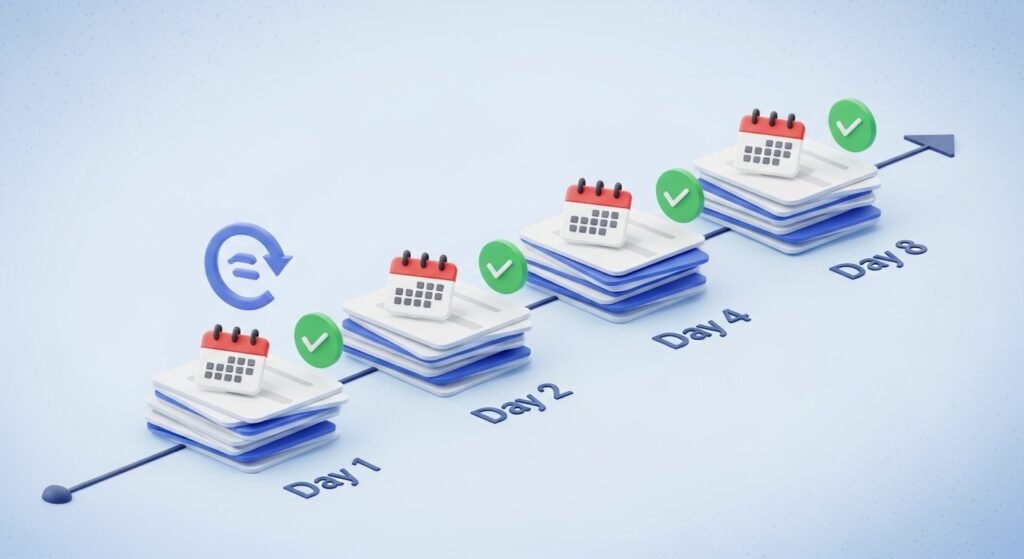
5 — Build a study calendar — weekly planning > daily chaos
Weekly planning beats reactive to-do lists. Spend 30–45 minutes each Sunday:
- Block fixed commitments (classes, work).
- Allocate 3 priority study blocks (90–120 min each) for deep work.
- Add small daily maintenance tasks (review flashcards, 20–30 min).
- Reserve a weekly reflection session (20–30 min) to update priorities.
Treat study blocks like class appointments — they’re non-negotiable.
6 — Use focused tools but keep your stack small
Too many apps create overhead. Choose one planner and one focus tool.
- Planner: Notion / Todoist for tasks and weekly plans.
- Focus: Pomodoro timers (Forest, TomatoTimer) or built-in timers.
- Memory: Anki for spaced flashcards (facts, formulas).
One simple stack reduces friction and helps you stay consistent.
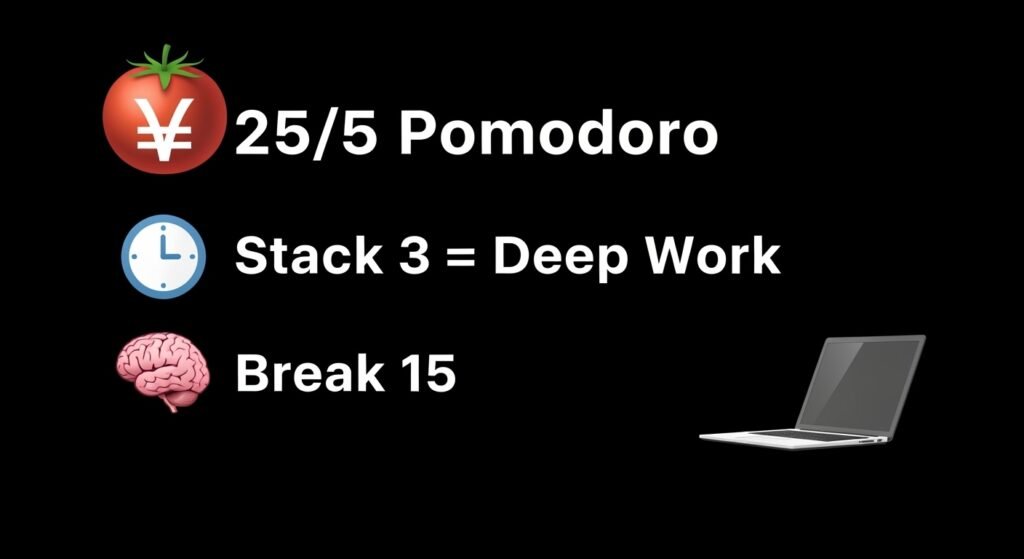
7 — Pomodoro + deep work — combine short sprints with longer runs
Pomodoro (25/5) is great for activation and avoiding procrastination. For tougher conceptual tasks, link multiple Pomodoros:
- 3 × 25/5 → 15–20 minute break (roughly 90 minutes of work).
- Or use a 50/10 rhythm for sustained focus.
Use the short breaks to move, hydrate, or review a quick flashcard — keep your brain warm.
8 — Protect your environment — design for focus
Small environmental fixes beat willpower:
- Phone in another room or on Do Not Disturb.
- A minimal desktop: only needed tabs/apps open.
- Use browser blockers (StayFocusd, LeechBlock) for social media.
- Have a tidy, dedicated study spot if possible.
Create friction for distractions and smooth flow for study tasks.
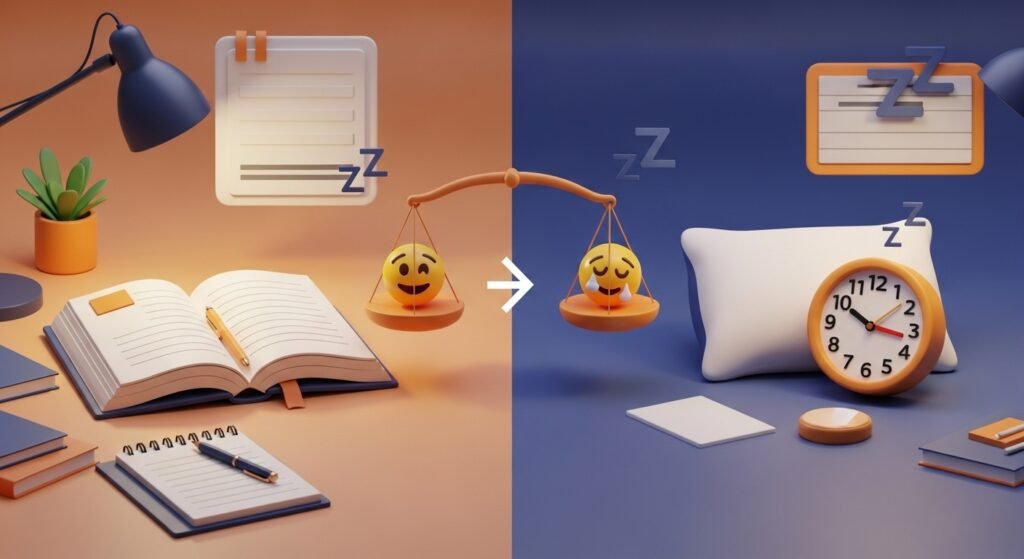
9 — Sleep and recovery are part of studying
Memory consolidation depends on sleep. After a learning session, a good night’s sleep helps lock in knowledge. Tips:
- Avoid heavy new learning immediately before an exam — focus on light retrieval instead.
- Short naps (20–30 min) after intense study help memory.
- Keep consistent sleep timing where possible.
Think of rest as study time — not wasted time.
10 — Use active note methods — make notes that work for recall
Notes should be retrieval tools, not reading crutches:
- Cornell Notes: Left column cues, right column notes, bottom summary. Great for quick review.
- One-page summaries: Condense a lecture or chapter to one page — forces selection of core ideas.
- Question cards: Turn each paragraph into a question for later self-testing.
The goal: produce material you can test yourself on later.
11 — Prioritize high-impact tasks with the “grade ROI” rule
Not all tasks earn the same grade return. Use a simple rule:
- Ask: “Which task most directly improves my exam score?”
- Prioritize practice problems, past papers, and weak topics before polishing notes.
Spend early study time on high-impact practice, later time on expansion and refinement.
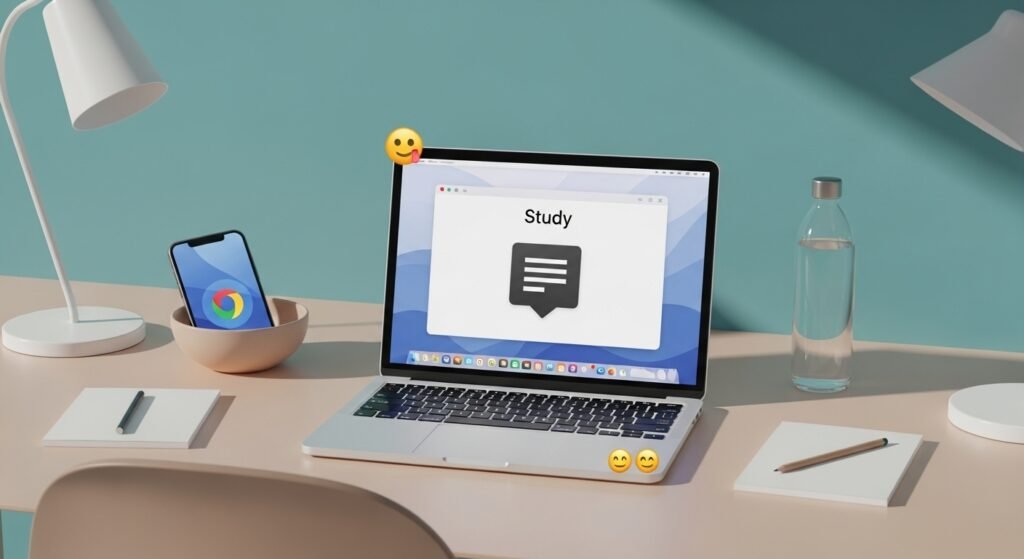
12 — Pair accountability with small commitments
Social accountability increases follow-through:
- Pair studyers for two short sessions per week (50 minutes focused, 10 minutes check-in).
- Share a small public goal (e.g., “I’ll finish 3 problem sets by Friday”).
- Join an online study group or forum for peer support.
Accountability prevents one-off motivation crashes.
13 — Track progress and adapt — simple metrics that matter
Measure two things:
- Quantity: Number of focused sessions (Pomodoros) per week.
- Quality: Percentage of practice problems solved correctly on the first try.
Adjust based on both. If quality is low, change method — perhaps more retrieval, or more spacing.
14 — A practical 7-day experiment (try it this week)
Follow this short plan to test the system:
- Day 1 (Sunday): Weekly plan & set one learning goal.
- Day 2: Study block (50 min) + retrieval (10 min).
- Day 3: Short review (20 min) + practice (25 min).
- Day 4: Practice under timed conditions (30–45 min).
- Day 5: Rest/light review (15–20 min).
- Day 6: Cumulative self-test (45 min).
- Day 7: Reflection & spacing schedule for next week.
Track Pomodoros and one quality metric — repeat and refine.
15 — Common mistakes and quick fixes
| Mistake | Fix |
|---|---|
| Rereading notes endlessly | Do a 10-minute free recall after reading |
| Studying late into the night | Move heavy learning earlier; use sleep as consolidation |
| Too many apps | Choose one planner and one focus tool |
| Ignoring mistakes | Keep an error log and schedule targeted practice |
Conclusion — build a study routine that fits your life
Strong studying comes from tiny, repeatable habits: weekly planning, focused sessions with retrieval, spaced reviews, and good sleep. Start with one change — add 10 minutes of retrieval after every session — and build from there. Small, consistent shifts beat occasional all-nighters.
Best Free Courses Online with Certificates in 2025
Call to Action — try one change for 7 days
Pick one of these study tips for students (retrieval practice, a weekly plan, or a Pomodoro routine) and commit for seven days. Share your chosen habit and one concrete goal in the comments — I’ll suggest a focused tweak to make it easier to stick.

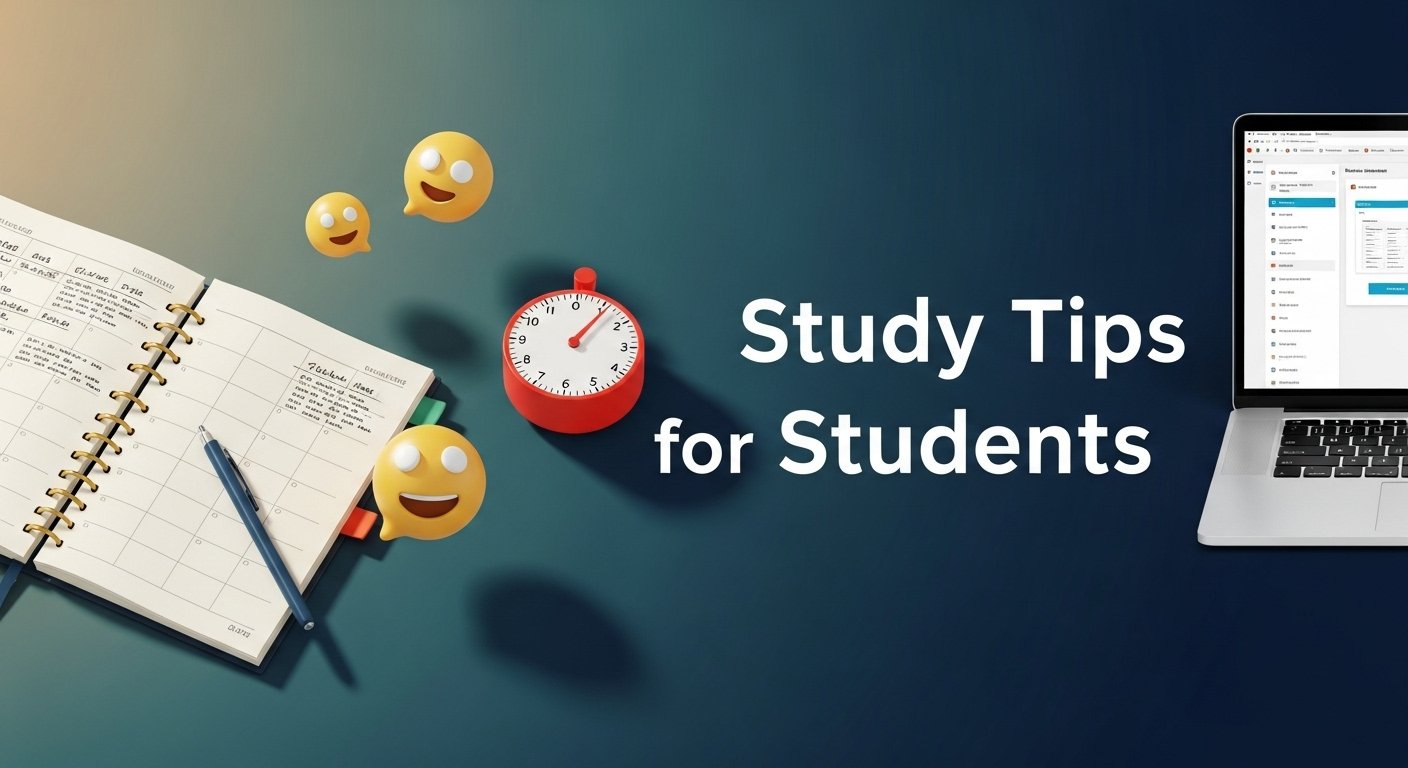


Pingback: The Ultimate Guide to Distance Learning in the USA (2025) - PaidScripts — Tech Education Hub: Coding, Courses & Student Resources